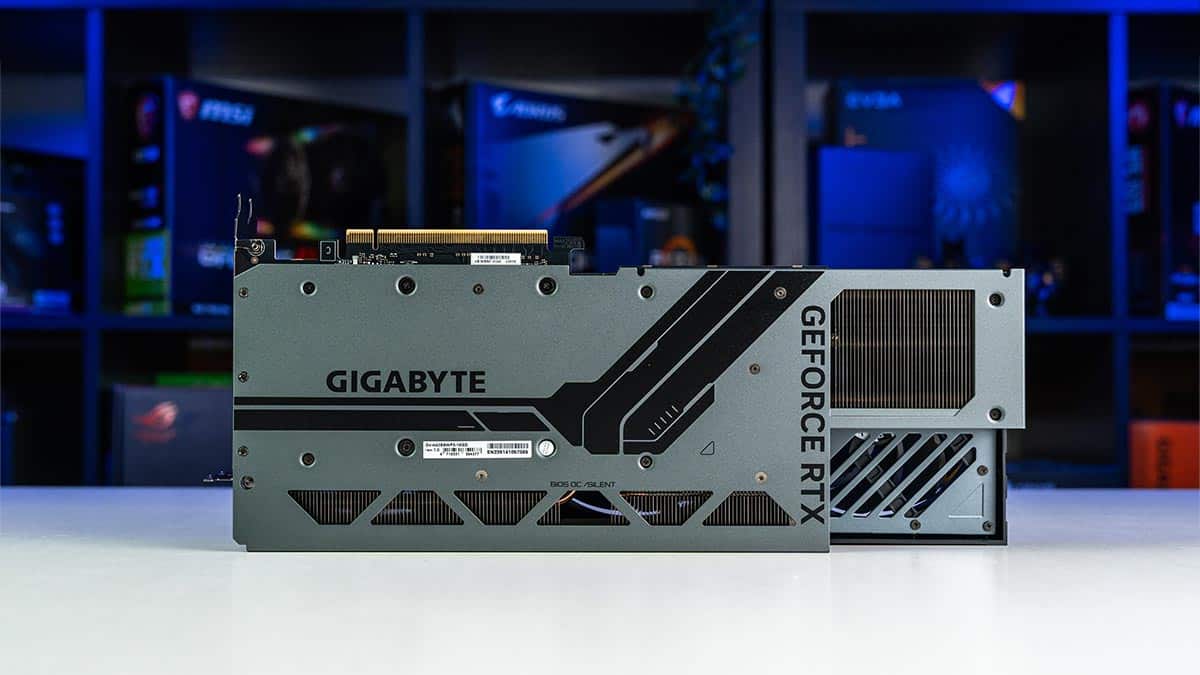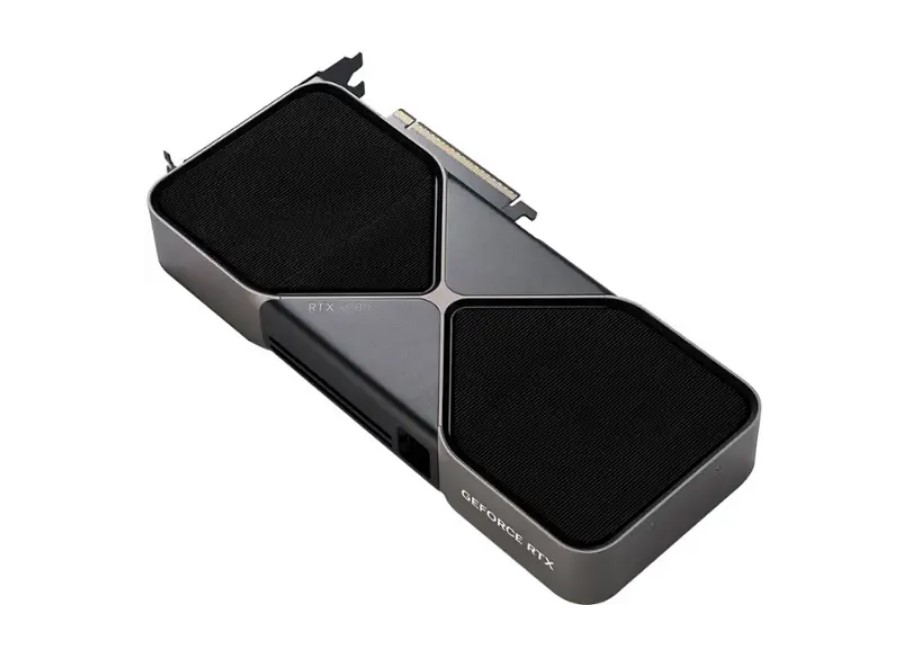RTX 5090 vs RTX 4080 Super specs comparison – how do they compare?

Table of Contents
The RTX 5090 has finally launched, and while it boasts some beefy specs, it sure does come at an eye-watering price. Sure, the RTX 5090 seems to be in a league of its own, but how large is the gulf between that and popular current cards like the RTX 4080 Super?
We were impressed with how the RTX 4080 Super performed in our testing, and for many, it’s a solid card for 4K gaming and productivity. So, while we’ve yet to put together our benchmarks for the RTX 5090, the embargo has lifted, and plenty of reviews are publicly available. We’ll use that information to draw a more in-depth comparison between these graphics cards.
When we do receive the card, it will run the gauntlet in our testing lab, and we’ll update this article with real-world performance. But for now, let’s compare the specs side by side and break down the key differences between the two.
Spec comparison
Here’s how the two compare regarding specifications and what they offer, with a summary of what that means for each card and how they compare. Being in different generations, there are some fundamental improvements in their makeup, but there are some other spec changes apart from the chip itself. So here’s how the two compare on some of the key specs.
| Specifications | RTX 5090 | RTX 4080 Super |
|---|---|---|
| CUDA Cores | 21,760 | 10,240 |
| Base clock speed | 2.01 GHz | 2.29 GHz |
| Boost clock speed | 2.41 GHz | 2.55 GHz |
| Memory | 32GB GDDR7 | 16GB GDDR6X |
| Memory interface | 512-bit | 256-bit |
| Bandwidth | 1.79 TB/s | 736GB/s |
| TGP | 575W | 320W |
| Release date | 30th January 2025 | 31st January 2024 |
| Dimensions | 304 mm x 137 mm x 48 mm | 310 mm x 140 mm x 61 mm |
CUDA cores
The brains of the GPU, the CUDA cores, do all the hard work of crunching numbers, creating the frames portrayed on your monitor, and completing the other tasks put to it. Being the proprietary tech for Nvidia, it has a great deal of power, and there’s quite a big difference in count between the two GPUs.
Not only does the 5090 more than double the count in the 4080 Super, but it also has improvements from the Blackwell architecture. Utilizing a newer, improved TSMC 4nm process to create it, it can have a more dense die with performance upgrades. But even without, the 5090 has 21,760 cores, overshadowing the 10,240 found on the RTX 4080 Super and having a lead in power and capabilities.
The only hope for the RTX 4080 Super to bridge the gap was to leverage Multi-Frame Generation, but that is exclusive to the RTX 50-series cards; however, normal DLSS 4 functionalities will be introduced for the RTX 40-series GPUs.
Clock speeds
Here’s one where the 4080 Super can boast about winning, and its clock speeds are higher than the RTX 5090. It’s not by that much, but it has a base clock of 2.29GHz, which is 280MHz higher than the 5090, and a boost clock reaches 2.55GHz over the 2.41GHz that the 50 series reaches.
These relate to how fast the cores on the graphics card process the data, with higher being better. Overclocks on the GPU can be pushed beyond the factory setting. But by default, the 40 card leads the way, even if it’s by a small amount.
Memory
Regarding VRAM on the cards, Nvidia has also vastly improved the capability and capacity for the new flagship. Splashing an impressive 32GB of GDDR7 onto it, there is plenty of memory for any tasks you chuck and loading any textures in the buffer. Not only that, but it also has a 512-bit memory bus, allowing for a whopping 1.79TB/s of bandwidth, pushing those AI capabilities even more in a consumer card.
In comparison, the 16GB of GDDR6X on the 4080 Super is just half of what the 5090 has to offer, and with a lower bandwidth. Dropping it down to 736GB/s cuts the bandwidth by more than half, which will quickly impact the card’s performance capabilities alongside the lower core count.
Power
Another advantage of the 4080 Super is the lower power amount required to power it. In fact, it’s rated for 255W less, as it is rated for 320W of board power. Whilst the 5090 jumps up all the way up to 575W, it is a massive power requirement that is not going to be cheap to run.
It will also have quite an impact on the power requirements of your gaming PC, as you have to consider the best PSU to fit it with. All of these will affect your budget and consideration of which to fit; it is not an insignificant decision and one that will definitely need some mulling over.
Sizing
Nvidia GPUs kept increasing in size with each generation; the RTX 4090 was significantly larger than the RTX 3090. However, this changed with the RTX 50-series GPUs, as one of the main focus points was to cut that trend. The RTX 4080 Super and RTX 5090 Founder’s Edition cards have a length and width of 304mm and 137mm, respectively.
They are nearly the same size, but the RTX 5090 is a 2-slot card, whereas the 4080 Super is a 3-slot card. This means the former is thinner despite having a much higher TDP of 575W compared to the latter’s 320W. Nvidia has an excellent video on this topic that takes us through the history of Founder’s Edition cards.
How they managed to reduce the size by making the PCB smaller, which allows both fans to blow the air, resulting in better cooling and a smaller size. This also means that you’ll have more space on your motherboard as the GPU is taking up less space, leaving other PCIe slots accessible.
Performance
To gauge the performance difference between the RTX 5090 and the RTX 4080 Super, we’ll use the publicly available benchmarks and our own RTX 4080 Super review. We’ll focus on the 4K native performance, as the results will be massively skewed in the 5090’s favor if DLSS 4 is part of the equation.
In the reviews, the RTX 5090 has been compared against the RTX 4090, which isn’t surprising; we have its 1440p and 4K in-game benchmarks available. In Cyberpunk 2077, the RTX 4080 Super managed 125 and 51 FPS at 1440p and 4K, respectively. However, the RTX 5090 had a much easier time as it delivered 209 FPS at 2K and 124 FPS at 4K.
So, it managed almost the same FPS at 4K as what the 4080 Super could produce at 1440p. Just looking at this, we can gauge how much more powerful the RTX 5090 is. However, in terms of percentage, this is a 50% and an 83% increment in 1440p and 4K performance. That being said, CPU bottleneck was a prevailing issue in some titles at 1440p, which makes sense if you think about it.
With how much power the RTX 5090 has, it is blowing through titles at 2K, meaning a fast CPU needs to be paired with it to eliminate the CPU bottleneck, like the Ryzen 7 9800X3D. This is why it is one of the best CPUs for the RTX 5090; however, we’re expecting the upcoming Ryzen 9 9950X3D and 9900X3D to also pair well with it.
Price difference
Another big factor is how much each card costs; here, there’s also a rather big discrepancy between the two. The RTX 5090 jumps up rather high in price, especially compared to the RTX 4080 Super. It jumps up to $2,000, doubling what the RTX 4080 Super cost with an MSRP of $1000, already lowering the price of the original 4080, which was already expensive.
That is quite a shocking price since the RTX 4090 price was already so high, but Nvidia keeps pushing it even higher. Along with the high power requirements, it’s neither a cheaper card to buy or run.

Final words
Looking at the differences between the two, there’s quite a drastic change but also quite a price difference. Unless you need all the extra cores and memory and even have the higher power requirements of the RTX 5090, then the RTX 4080 Super just makes that bit more sense to go for.
For gaming, put the money into a better CPU or the rest of the system and get a better value for it. But as always, the high spec of the card makes it all the more appealing, too, and it has plenty of use cases beyond gaming. Even the likes of DLSS 4 will be limited to the 50 series, so you might not want to miss out on the extras.

